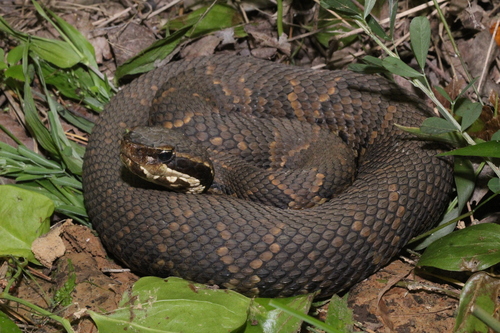
Cottonmouth
The cottonmouth, Agkistrodon piscivorus, is a semi-aquatic snake known for its defensive white mouth display. Thriving in U.S. wetlands, it plays a key role in controlling rodent populations. Its dark, heavy body and aggressive nature distinguish it in its aquatic home.
10 years
Lifespan
Length: 61 - 122 cm
Size
Brown, Black, Olive
Color
Least Concern
Conservation Status
Stable
Population Trend
Characteristics
Agkistrodon piscivorus, commonly known as the cottonmouth or water moccasin, is a venomous snake found in the southeastern United States. It thrives in wetland habitats such as swamps, marshes, and slow-moving streams. This semi-aquatic species is notable for its aggressive defense behavior and distinctive white mouth display when threatened. Cottonmouths are also recognized for their heavy bodies, keeled scales, and a pattern that darkens with age, often resulting in a deep, uniform black or brown color in adults.
Distribution Range of the Cottonmouth
Agkistrodon piscivorus, commonly known as the cottonmouth or water moccasin, is native to the southeastern United States. Its geographical distribution includes the states from Virginia to Florida, west to Texas, Oklahoma, and parts of Illinois, Indiana, and Missouri.
Cottonmouth's Habitat
Environmental Conditions
The cottonmouth is typically found in wetland environments such as swamps, marshes, and the edges of lakes, ponds, and slow-moving streams. It prefers areas with abundant water and dense vegetation, which provide cover and hunting opportunities.
Ecological Niche
Agkistrodon piscivorus is a semi-aquatic pit viper, meaning it is adapted to both aquatic and terrestrial habitats. It is an opportunistic predator, feeding on fish, amphibians, small mammals, birds, and other reptiles. Its ability to thrive in a variety of wetland environments makes it an important predator in maintaining the balance of ecosystems in its native range.
Copyright @ Nature Style Limited. All Rights Reserved.
 English
English